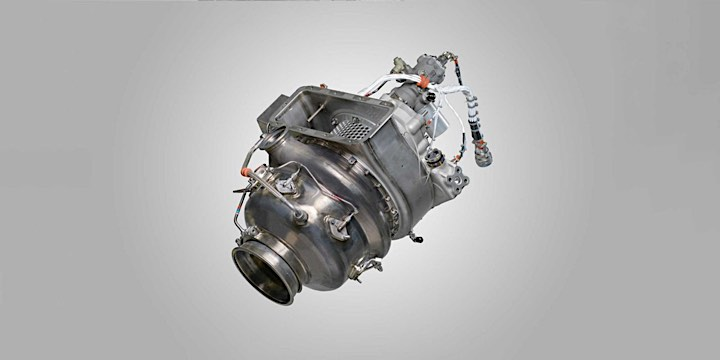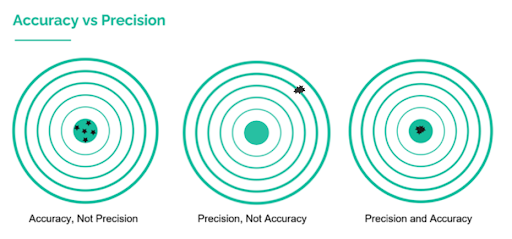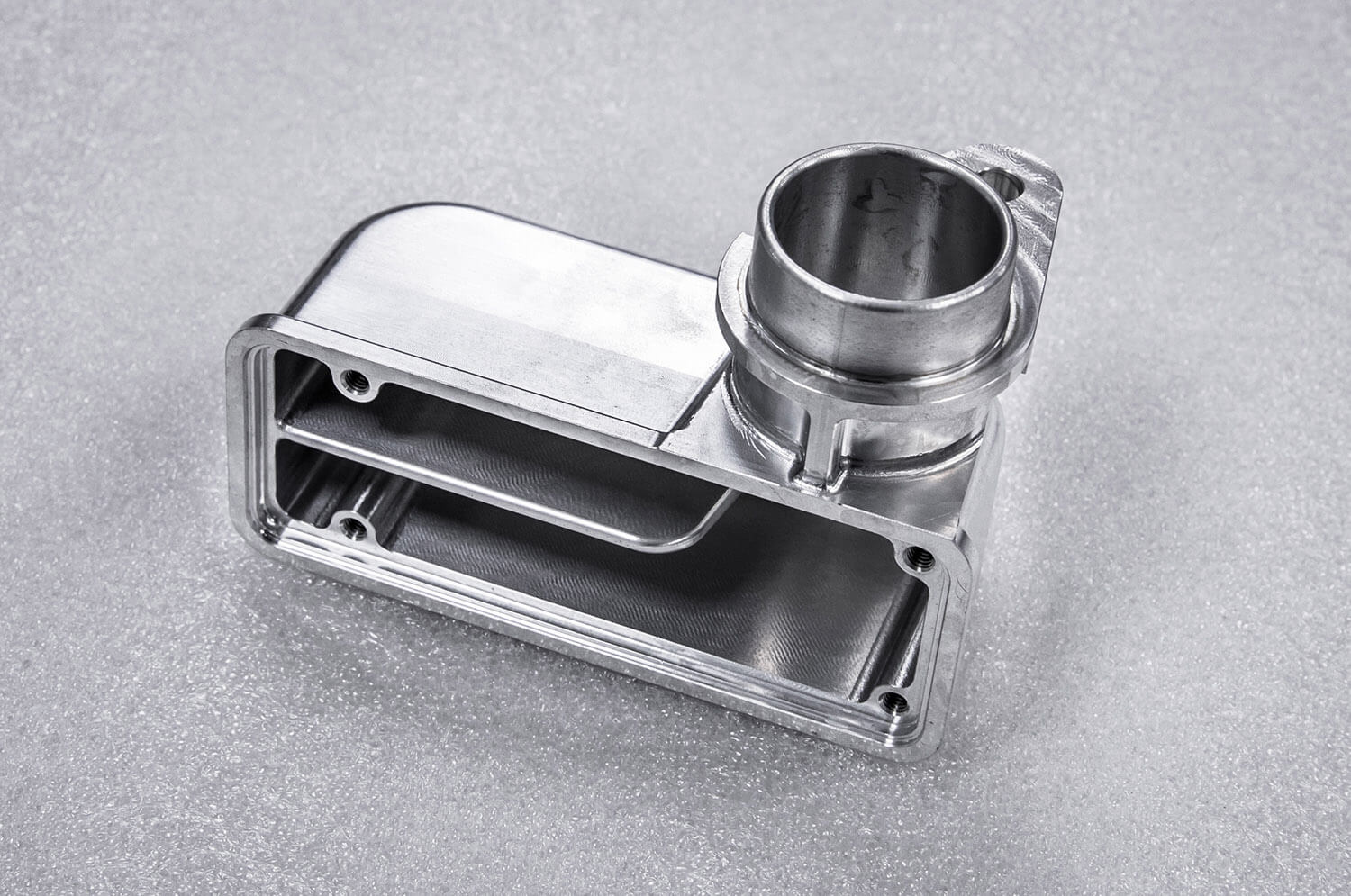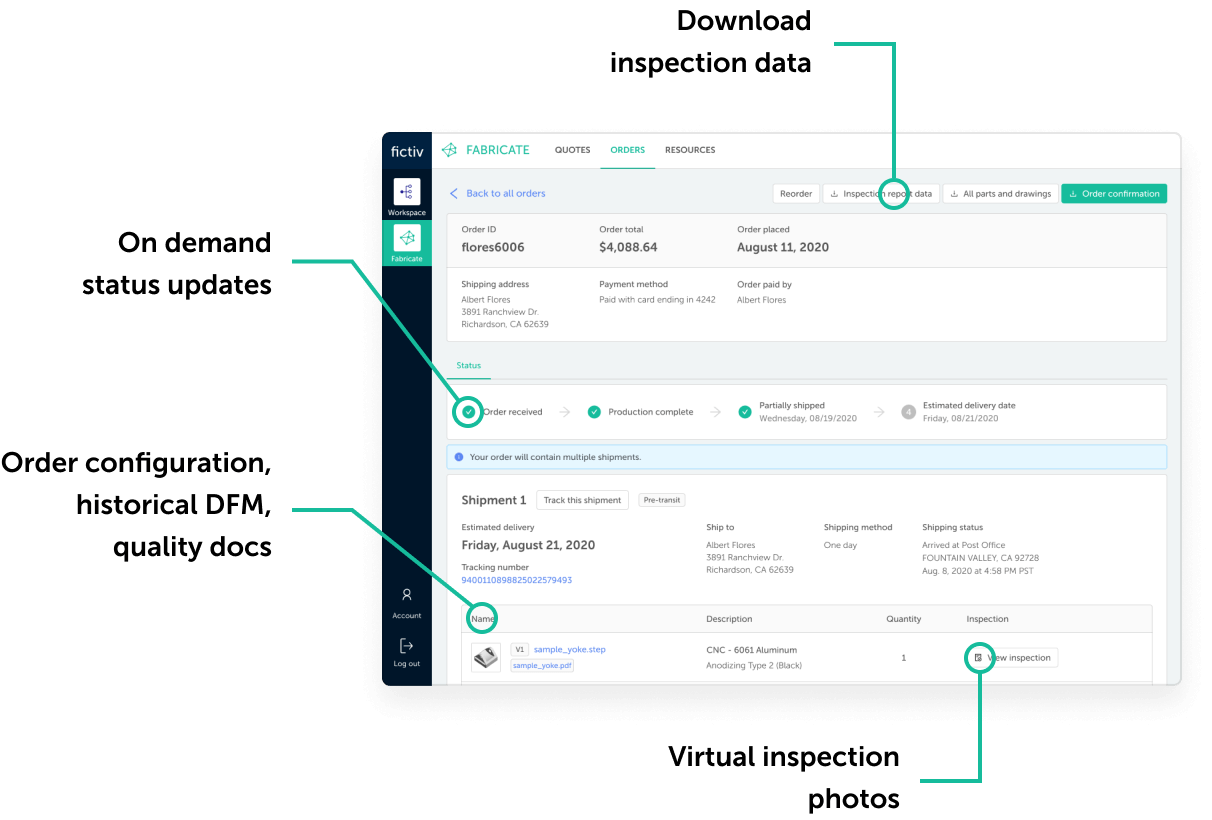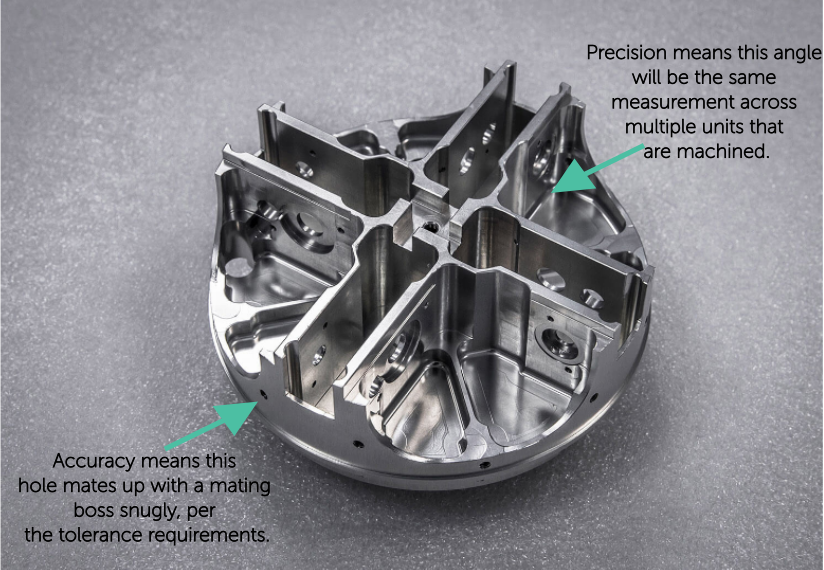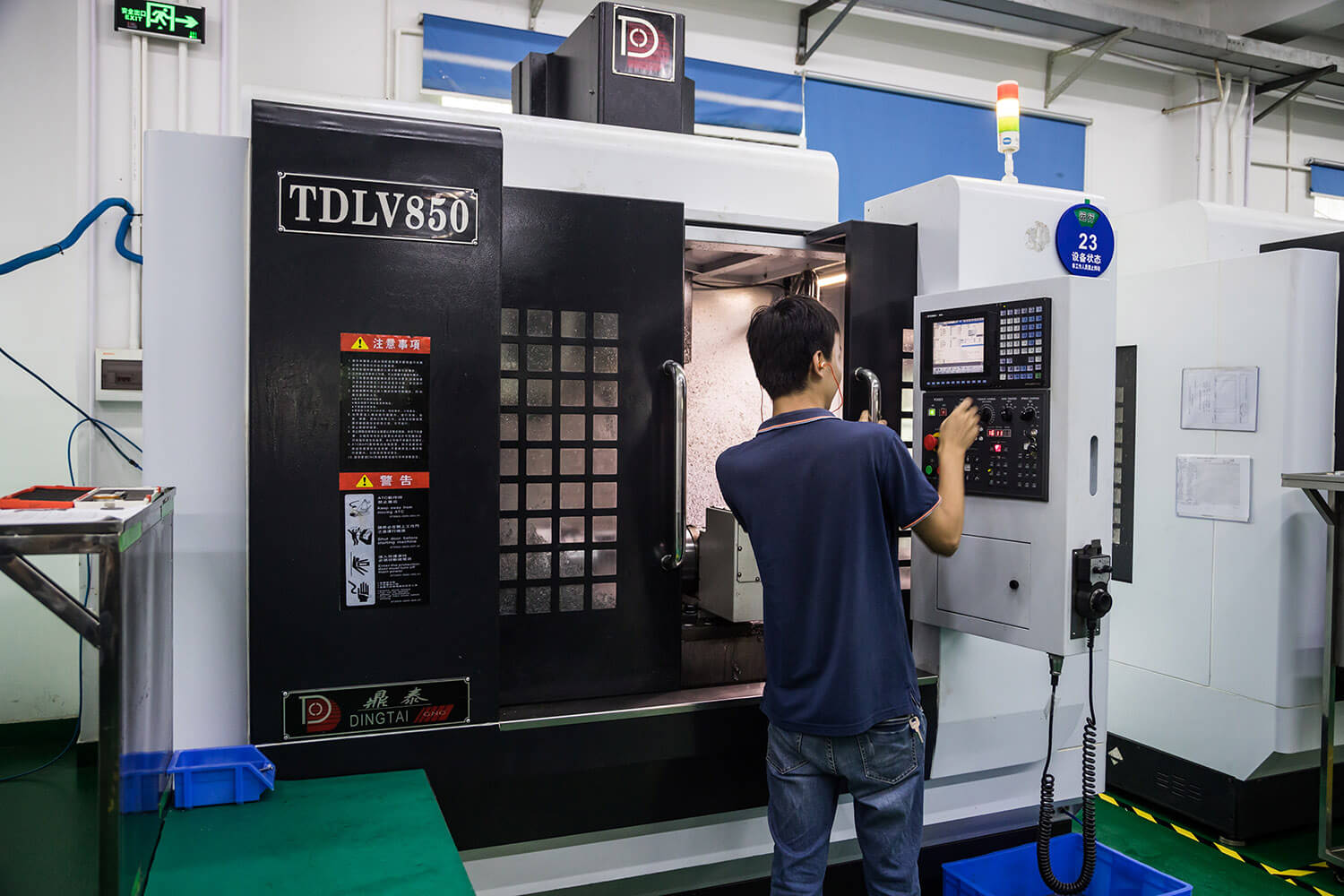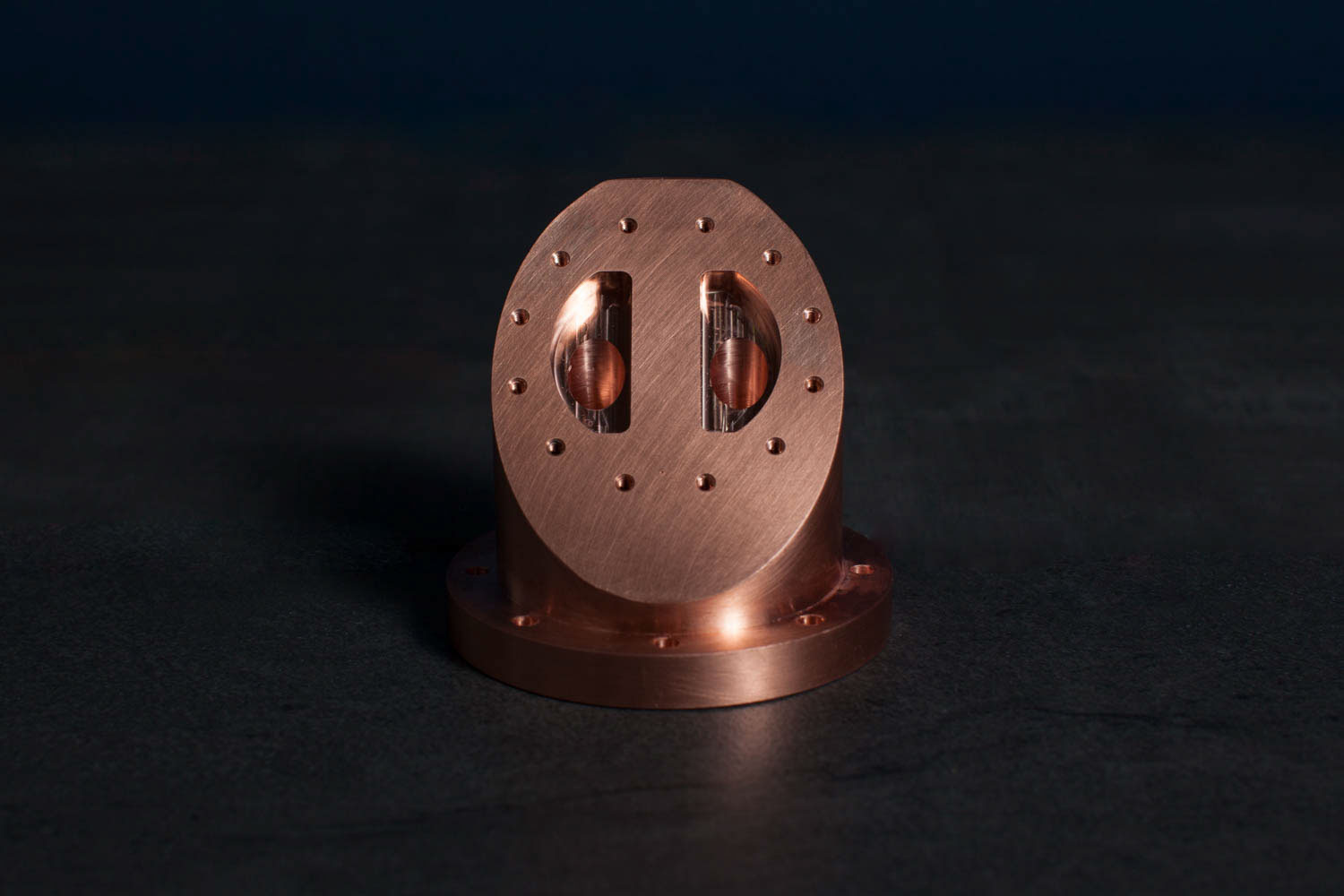Article contents
▸
By signing up, you agree to our Terms of Use and Privacy Policy. We may use the info you submit to contact you and use data from third parties to personalize your experience.
Thank you for subscribing!
Article
What comes to mind when you think of precision machined parts? Maybe what comes to mind is something like a super fancy surgical instrument, components of a space antenna, or even a jet engine. Precision machining is what produces many of the parts that make the world go round.
This guide will explain the basics of precision part machining and detail cutting-edge technological advancements.
We’ll also address some common issues in precision machining:
Shameless Plug: If you are looking for a manufacturing partner who can handle your precision machining needs at rapid speeds (up to 40% faster lead times vs. industry average), look no further than Fictiv. Get a free instant quote today to see for yourself!
“Precision machining” is a term many manufacturers throw around to entice potential buyers and elevate their perception of their capabilities. But to truly understand what a precision machined part is, we need to review the definitions of precision and accuracy, two terms often used interchangeably and incorrectly. Both are related to quality, but they are not the same thing.
Accuracy means how close to the targeted values something is; for example, how close the measurement is to the dimension. High accuracy means a measured value doesn’t deviate much from the desired value.
Precision is the ability to replicate consistent attributes across many produced units (for example, hitting the same dimension when machining 200 parts). Precision is repeatability.
Pro-Tip: To learn more about precision vs. accuracy and how to improve the precision of your parts, check out Precision CNC Machining: How Can You Make Your Parts More Precise?
Therefore, precision machined parts have the same dimension across many machined components. When a machine shop says they can hit your precision requirements, they can hit your dimensional requirements across multiple parts of the same design.
Now, the ability to do this also means that a shop is more likely to hit your design’s accuracy targets/tolerance requirements — but technically, a machine shop can be capable of high precision without ever meeting accuracy requirements.
You ideally want a precision machined part supplier who can meet both accuracy and precision requirements so you can make sure your parts are consistent and meet your design intent.
With Fictiv’s intelligent online platform, you can ensure no design requirement is left behind. Our platform seamlessly captures every design requirement with high precision, ensuring our highly-vetted manufacturing partners know exactly how to make your parts to spec. We provide tolerances as low as 4 microns, with a high level of repeatability, so you get accuracy, precision, and world-class traceability. To see all of our tolerance capabilities, check out this guide.
Now that we understand the definition of precision let’s dive into how precision machined components are made. For a supplier to be capable of producing precision components, they must have processes and equipment to facilitate precision machining.
A precision machine shop invests heavily in its quality control and management systems (some refer to the quality management system as quality assurance). The only way to meet precision and accuracy requirements is to start with a strong quality foundation.
I have worked as an engineer supporting quality and even as a quality manager for manufacturing facilities — both with and without strong quality control or management — which taught me the importance of a strong quality foundation. At the companies without that foundation, I was left scrambling to support failure analysis efforts and navigate production delays while meeting customer specifications. Failures tended to be less common and less severe at companies with strong quality foundations, and when they did happen, they were mitigated faster.
Here’s a list of elements for a strong quality control and management system at a precision machine shop:
You may have noticed that some of these bullet points are requirements for an AS9100-compliant quality management system, and I did that on purpose! Following a standard is an important and useful tool with proven success.
Based on our experience, here are some of the key elements of high-quality, precision CNC machining:
A good way to think about precision CNC machining is if your supplier always meets your accuracy requirements, your parts will be precise enough for the application. So, if you always get highly accurate measurements for parts within the allowable tolerance range, you will inevitably achieve high precision.
High-precision CNC machines are capable of position accuracy down to the millionth of an inch and repeatability down to the ten-thousandth of an inch because they:
Protip: A note about precision from one of my favorite textbooks (Shigley’s Mechanical Engineering Design): “Excessive precision on the part of the designer may seem like an easy way to achieve functionality, but it is a poor design choice in that it limits the manufacturing options and drives up the cost.”
A good general rule is to simplify designs to save time and money!
Precision machining is an optimal choice for many industries and applications — whenever your part plays an important functional role or is assembled with other components, precision CNC machining is the best choice for manufacturing.
Examples of precision-machined aerospace parts include:
Examples of precision-machined transportation parts include:
Examples of precision-machined medical industry parts include:
Precision CNC machining is also utilized to manufacture components for the following:
Precision machining can be carried out with metal and non-metal materials.
Pro-Tip: When sourcing materials, ensure you get materials per your required specifications and request a material certificate with your parts.
Advancements in tooling materials, coatings, and geometries expand the capabilities of precision machining and the durability of tooling, which reduces the potential for missing precision requirements like critical dimensions due to tool wear or failure.
Common coatings for CNC tooling include titanium and/or carbide, which increase wear resistance and hardness of the tool’s surface. Recent advancements include coatings with incorporated nanocomposites or nanolayers to improve tools’ wear resistance and coefficient of friction. These nanomaterial coatings also prevent crack propagation of the coating, which would otherwise compromise the base material of the tool.
Coating technology has also improved to allow for thinner coatings with the same wear resistance/hardness properties — thicker coatings create more rounded tool edges, which reduces their cutting ability for materials like stainless steel and aluminum (although it may be fine for carbon steel and cast iron).
New coating technologies like physical vapor deposition allow for a homogenous, thin coating with excellent mechanical properties. These methods can be performed using various coating materials, such as a titanium, nitrogen, and aluminum combination (TiAlN).
AI, robotics, and simulation technologies are also being used in every industry, and precision CNC machining is benefiting from these advancements, too:
Fictiv is your operating system for custom manufacturing and your ultimate precision CNC machining service.
The accessibility, convenience, and enhanced communication of our platform, combined with fast turnaround times, customization, and material options, make us the right choice for precision CNC machining services. Add in the skill and knowledge to help you scale from prototypes to production seamlessly, and you won’t find a better production partner than Fictiv!
Choose Fictiv for all your precision CNC part manufacturing needs. Sign up for a free account and see how beneficial our CNC machining services can be for you!
By signing up, you agree to our Terms of Use and Privacy Policy. We may use the info you submit to contact you and use data from third parties to personalize your experience.
